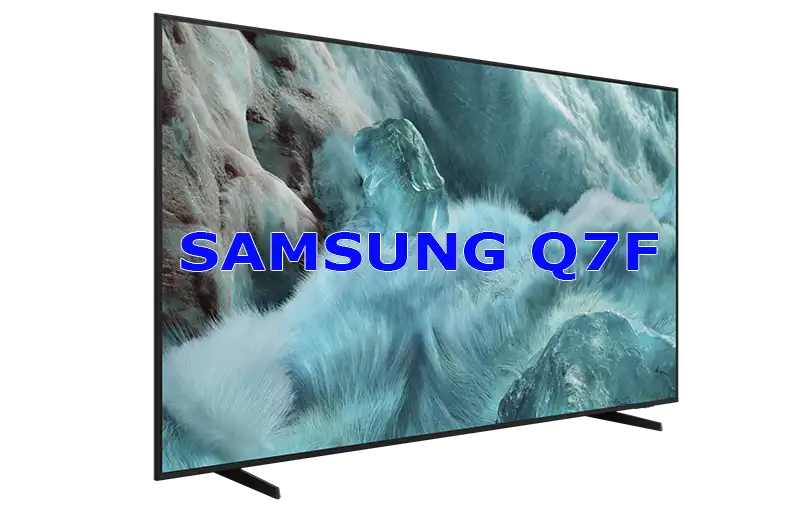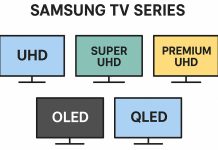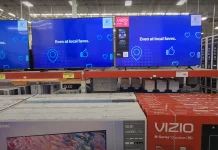You’ve probably already seen the descriptions of Samsung’s new TVs unveiled at the Las Vegas show in early 2025—but most of those were just echoes of the company’s press releases, carefully crafted to present the products in the best possible light. In this article, we’ll cut through the marketing gloss and take a closer look at what Samsung is actually bringing to the table in 2025.
Samsung’s Return to Full HD
In 2021, Samsung made the decision to stop producing Full HD TVs, arguing that lower-resolution screens were outdated and that consumer interest had shifted entirely to UHD models. But while Samsung moved on, competitors like Hisense and TCL went in the opposite direction—doubling down on ultra-budget TVs with Full HD and even HD displays. And they found success doing so.
Eventually, Samsung realized it had stepped away from a profitable segment of the market. Now, in 2025, the company is making a comeback with the F6000F series—a no-frills, affordable Smart TV that runs on the updated Tizen 9.0 operating system with the familiar One UI interface.
The F6000F keeps things as simple and cost-effective as possible: a basic display, a stripped-down universal remote, and only the essential ports for external connections. It’s a practical solution aimed at those who want smart features without spending extra.
In general, the Crystal series are super-budget TVs, equipped with cheap displays with appropriate picture quality. You can find the U7000F, U8000F or U9000F TVs.
OLED TVs Samsung 2025
Samsung’s OLED TVs for 2025 are available in three models: S85F, S90F, and S95F. Although these models share the same display technology, they differ in software features and the number of speakers. Generally, the more expensive the model, the more advanced software and additional features it offers. Notably, the S95F model includes a separate One Connect unit for 2024.
Samsung continues to face challenges in OLED panel production. As a result, both the 55-inch and 65-inch models are equipped with displays sourced from Samsung, while the 77-inch S85F model uses a display from LG.
QLED and Neo QLED TVs from Samsung (2025)
Samsung’s 2025 lineup includes two main series of LED TVs: QLED and Neo QLED. The QLED series is more budget-friendly, but features displays of generally mediocre quality. Neo QLED TVs, on the other hand, offer improved displays, typically supporting true 10-bit color depth to improve color accuracy.
There are also TVs with 8K displays that are more expensive than OLED TVs because of the manufacturing technology. However, they are not superior to OLED TVs in terms of picture quality. Despite the high cost, 8K TVs are manufactured and available in the market, although they have not gained much popularity among consumers. These TVs use a display calibration program to improve their visual appeal, although the effectiveness of this calibration may be somewhat exaggerated.
Other than a new version of the operating system, there are no notable differences between the 2025 models and the previous 2024 models.
Lifestyle TV 2025 models
Samsung’s Lifestyle TV 2025 range combines video display technology with thoughtful design to offer TVs that will fit seamlessly into any living space. A standout model in the series is The Frame, known for its Art Mode, which allows artwork to be displayed on the screen when not in use. Users can access an extensive subscription-based art gallery featuring both classic masterpieces and contemporary works.
These TVs use budget QLED panels, while some models feature enhanced Neo QLED displays that offer increased brightness, contrast and vivid color reproduction in a variety of lighting conditions. In addition, The Frame supports interchangeable frames to match different interior styles and features a matte screen with anti-reflective coating to create the impression of a real canvas.
In addition to The Frame, the Lifestyle Series includes other unique models such as The Serif with a distinctive design, The Sero with a rotating screen for vertical and horizontal content arrangement, and The Terrace, specially designed for outdoor viewing. These models are typically introduced mid-year.
In conclusion about Samsung TVs of 2025
TVs have peaked in recent years, making it difficult to introduce truly innovative features. Therefore, marketing departments often come up with catchy names for trivial or even non-existent features. A prime example is the advertised artificial intelligence in TVs, including so-called Vision AI technology. While some elements of this technology may be present, much of it is simply marketing jargon. For example, advanced processors with artificial intelligence are advertised, but they are really just basic 4-core processors with 16 or 32 GB of memory. It is doubtful that artificial intelligence can work effectively with such low-powered processors.
Also, upgrading to a 165Hz refresh rate is mostly unnecessary and can only be used in gaming consoles. For those who buy a TV primarily for watching video, support for such a high refresh rate is irrelevant as there is currently no video content above 120Hz. However, since many people buy TVs for gaming, features such as Game Bar and MiniMap Zoom are included to enhance that experience.








